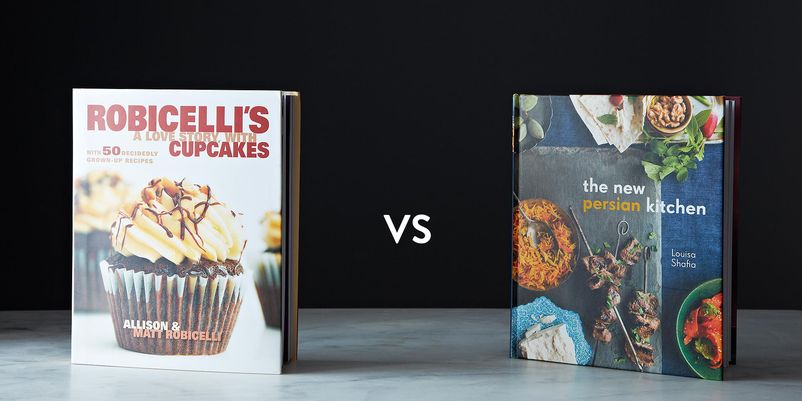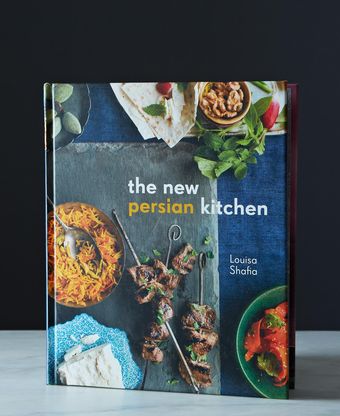I love to cook, but I am not a cookbook cook.
I can't remember the last time I followed a recipe from a cookbook, let alone a baking cookbook -- something which requires exactitude -- so I consider myself a perfect, though amateur, judge. Faced with cooking something out of these two very cool books, I couldn't have been more intimidated, but as I diligently thumbed through each one, that intimidation turned to excitement: these books were both beautiful, interesting, and full of things I wanted to make.
Content-wise, they couldn't be more different. Robicelli’s is a paean to Brooklyn and the bold lives of Allison and Matt Robicelli, who have built a successful business from scratch. The humor and upbeat charisma of Allison and Matt is evident in every page, but as I read, I began to find the design and structure of the book distracting. It organizes itself around "Love Letter" sections ("A Love Letter to Christopher Guest" is meant to explain and highlight their oddly balanced or "clever/stupid" recipes, for example) that are very abstract; when I look at the Table of Contents, I have no clear idea about what the cupcakes in each section might look or taste like. I would have appreciated more photos alongside the recipes to help guide a visual thinker like myself, and the font sizes on the page jump up and down, which made it hard for me to navigate the recipe instructions reliably.
Do the Robicellis know how to make rich and interesting cupcakes? Yes, they do. (And, full disclosure: I happen to love cupcakes.) But baking is tough, and when I do it, I want a calm, clear guide. There were times when this book didn’t offer that. The Robicellis are intense -- and sometimes that made it hard for me to learn from them. From their book I made the Brooklyn Blackout Cupcakes; the recipe was complicated and hard to follow, but it was also incredibly delicious.
I baked them a second time, and I did find that doing so made them quite a bit easier. Based on famous cupcakes from Ebingers Bakery, they require the baking of the cupcakes, the making of a custard, and, finally, a shiny glaze that covers the custard and makes the whole thing that much more decadent. And, oh, the chocolate! If you love chocolate, these are for you. There is so much knowledge and deliciousness here to enjoy, just as soon as you decipher the 4-page recipe.
They had me with their beautiful cover, but, at times, they lost me with the content.
The New Persian Kitchen is an elegant introduction to Persian food and, after the first book, I found it comforting to read. The table of contents is laid out very clearly, starting with "starters and snacks" and ending with "pickles and preserves." The font size changes are all well organized so that chapters and recipes stand out the most. And there is a compelling lead-in to Persian cuisine which answered a big question on my mind right away:
"I'm often asked, "So, what exactly is Persian food?" The best way I can think of to describe it is as a lush garden in the desert, a familiar image from classical Persian lore ... Why a desert garden? Through a system of underground aquifers, ancient Persians transformed vast stretches of arid land into fertile oases, and over thousands of years, the miracle of water in such unlikely places led to a cuisine that relishes the gifts of the garden in every bite."
I loved that image -- it inspired and colored Shafia’s whole collection of recipes.
Shafia’s writing never tried to sell me on her personality; I trusted her completely and appreciated her calm approach as I entered this new, unfamiliar cuisine. The recipes mainly filled individual pages (a plus: no page turning while cooking) and were clearly laid out.
The Date-and-Walnut-Filled Cookies I chose to make intimidated me at first, as they seemed to require an global assortment of flour that I couldn't find (fava bean, coconut, tapioca). But Shafia assured me that I could use white flour if I needed, and everything baked up perfectly. The cookies were nutty and light -- not only successful, but delicious, subtle, and surprising, with a recipe that was easy to follow. In fact everything about The New Persian Kitchen was much simpler once you dove in; the organization and tone seemed geared to that effect. If an ingredient was rare or a cooking tool unique, there was always a common replacement.
I made these cookies twice as well, and they improved greatly on the second round. Making the balls of dough and stuffing them with the date-nut filling is tricky, but both trials came out with a buttery crust and a lovely filling. This recipe packed itself very nicely into a page and a half, which meant that I didn't need to do too much page flipping.
These books are both beautiful on first glance -- their covers interesting and delicious-looking -- but when you open them up, they’re vastly different. I now believe a good cookbook illuminates the story of the food and the making of it. To me, the story of the cook is much less important.
For that reason, The New Persian Kitchen is the book I’m more likely to keep on my kitchen shelf.



68 Comments
Switching gears abruptly, the Shaifa book is very reader friendly. The layout is easy on the eyes and rather comforting in tone. Almost too tranquille. I found my attention wondering a bit as I perused the recipes. The directions are clear and well organized. I didn't feel intimidated by this book which I sort of felt with Jerusalem by Ottolenghi which is an incredible book, but still intense and intimidating. That's why The New Persian Kitchen on my wishlist.